The first British criminals to be exiled as convicts were sent to America, but this ended with the outbreak of the War of Independence in 1776. Amid increasingly overcrowded prisons, legislation was passed to establish a new penal colony in Australia.
The First Fleet of convicts set sail for Botany Bay in 1787, and by the time the practice ceased in 1868, more than 160,000 individuals had been transported. Many were sentenced for petty offences – theft and fraud were common misdemeanours – and around one in every seven were female. While most were taken to colonies in New South Wales, then later in Tasmania and Western Australia, many ended up elsewhere, often taken by the masters they had been assigned to as part of their sentence, or moving once they had gained their freedom. Many modern-day Australians are descended from convicts. The process of convict settlement also led to Aboriginal Australians being displaced from their land and suffering from plagues of deadly diseases from the convict groups. If your ancestor was deported to Australia as a convict, find out how to trace them with these convict records websites.
Convict records: The best websites
1. State Library Of Queensland
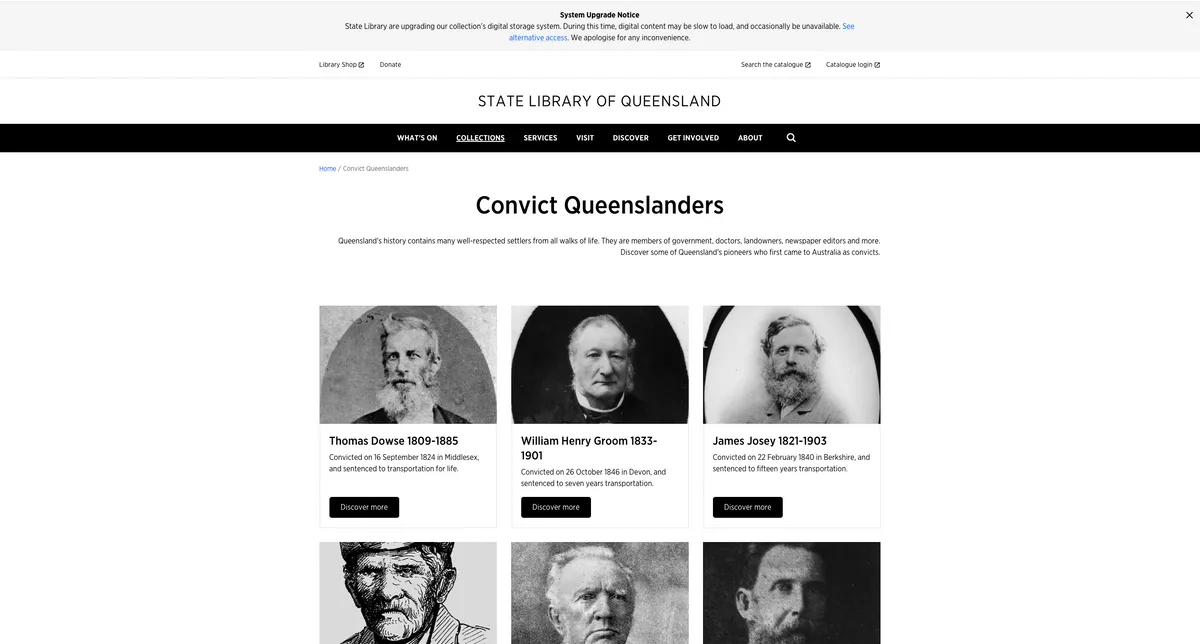
This gallery of Queensland convict records illustrates the lives many built after their sentence. One James Josey, for example, became a farmer in Opossum Creek, “thoroughly respected as one of the pioneers of the district”. From this web page you can access a dataset of about 123,000 convicted felons drawn from British Home Office transportation registers. This records length of sentence (usually seven years, 14 years or life), name, aliases, place of trial, name of ship, date of departure, and place of arrival. It includes records of convicts sent to New South Wales, Van Diemen’s Land (Tasmania), Moreton Bay (Brisbane), Port Phillip, Western Australia and Norfolk Island. You can download the dataset, or search it online.
2. Libraries Tasmania
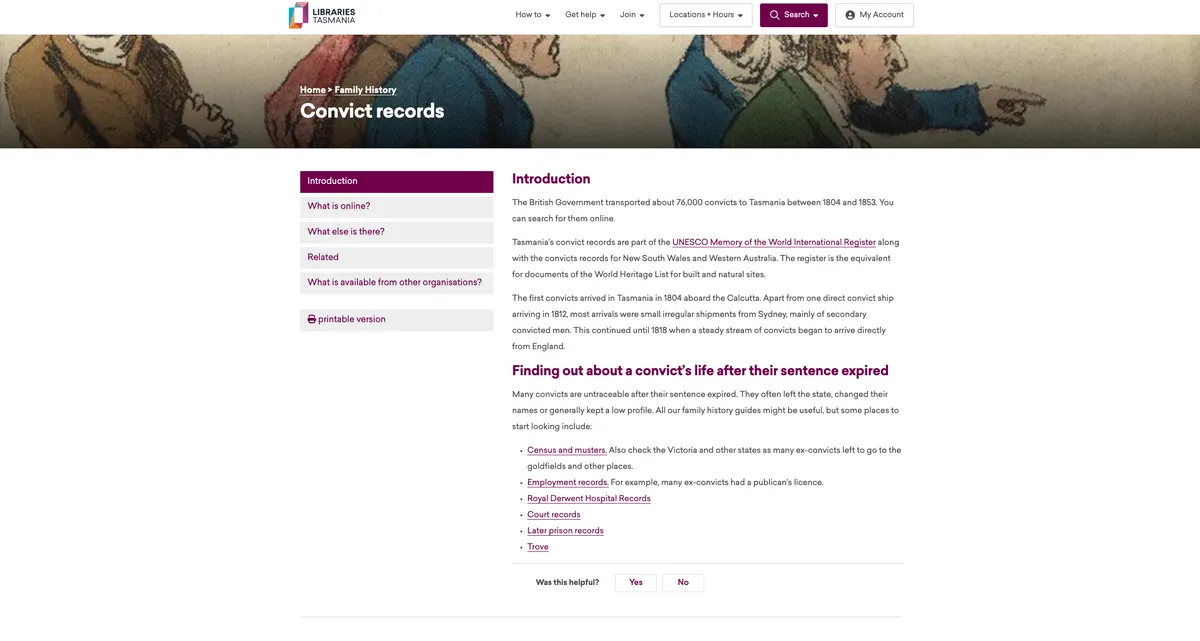
Here you can find out more about the approximately 76,000 convicts who were sent to Tasmania between 1804 and 1853. There are a host of free indexes, research guides and finding aids. These include convict-assignment lists, appropriation lists, and documents sent to the Prisoners’ Barracks in Hobart. You can download images of sources including ‘Alphabetical Registers of Male Convicts’ revealing height, complexion, and colour of hair and eyes.
3. The Proceedings Of The Old Bailey
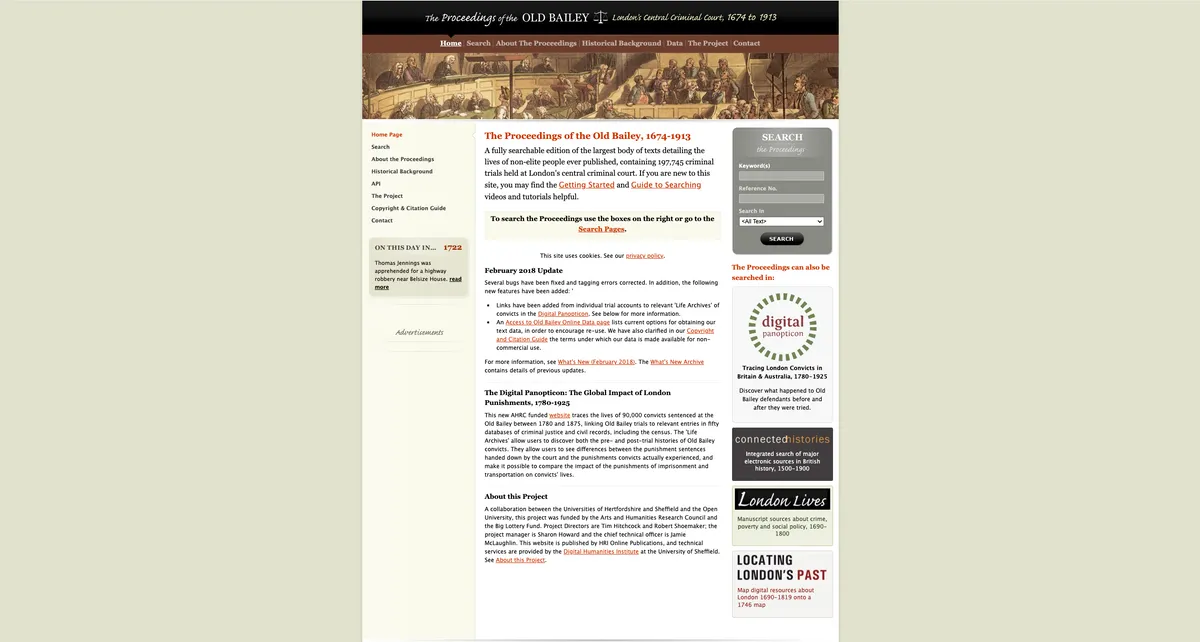
This is a fully searchable edition of texts from 197,745 trials held at London’s central criminal court between 1674 and 1913, and you can tailor your search results to this month’s topic by selecting ‘Transportation’ in the ‘Sentence’ field. The database was already a fascinating tool when it launched 20 years ago, and has improved dramatically since then. It now links to the Digital Panopticon, a project that explores the impact of imprisonment and transportation on convicts’ lives. Using records from some 50 datasets, it traces 90,000 felons sentenced at the Old Bailey, following them through the criminal-justice system and beyond.
4. New South Wales State Archives
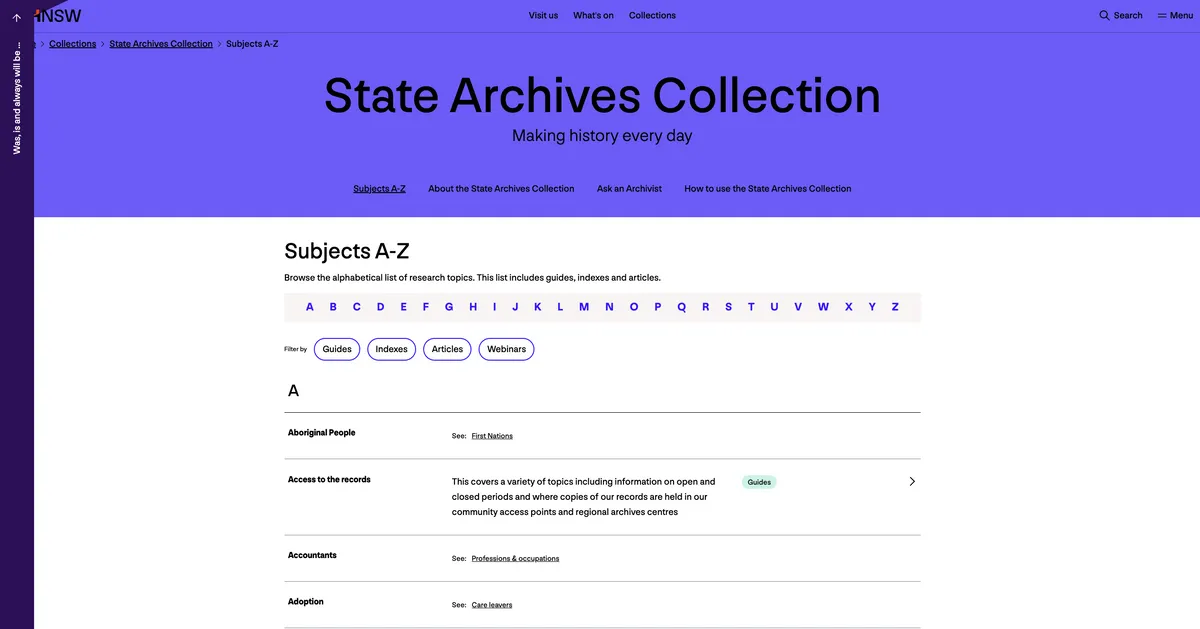
This web page provides an alphabetical list of collections preserved in Sydney, with colour-coded tabs that lead to further articles, indexes, guides or webinars. Via ‘Convicts’ you can search indexes to applications to marry (1825–1851), convict assignments (1821–1825) – listing name, ship, date of assignment, to whom assigned, residence and remarks – and a general index, featuring references to more than 140,000 certificates of freedom, bank accounts, deaths, exemptions from government labour, pardons, tickets of leave, and passports. You can also read more about Hyde Park Barracks in Sydney, which opened in 1819 and held convicts.
5. Convict Records
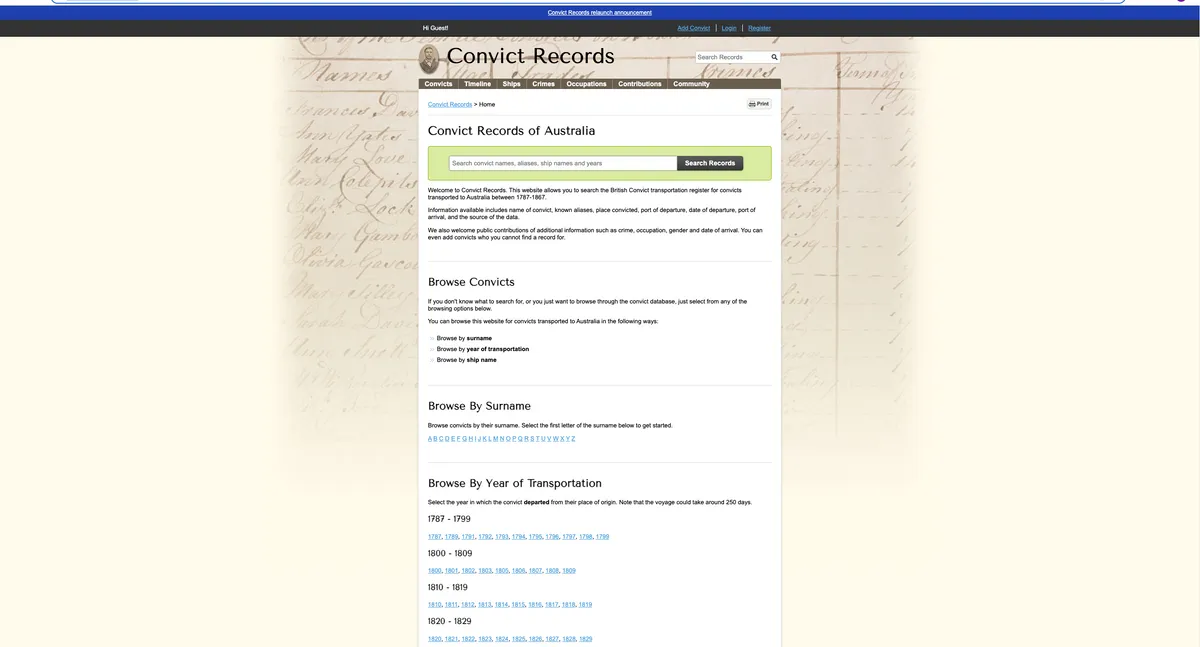
You can browse the data here, which covers 1787–1867, by surname, year or ship’s name. There is lots of material here that you can find elsewhere, but it scores over rivals by bringing several databases together under one roof. On the ‘Resources’ page you can find out more about the source material, and follow links to other sites such as the very old (but still functioning) First Fleet Convicts database by the University of Wollongong.
6. Expert's choice: National Library of Australia
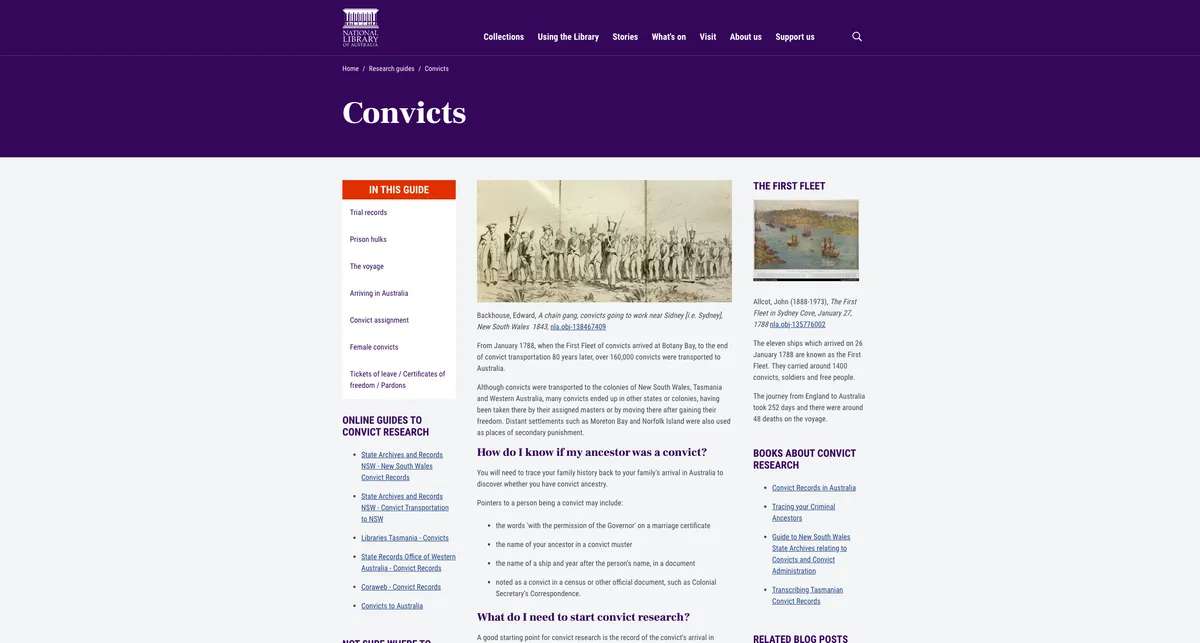
Chosen by Michelle Higgs, author of Prison Life in Victorian England:
"The National Library of Australia (NLA) does a fantastic job of showcasing its digital treasures. And its guide to convict records at is one of the best I’ve seen: reader-friendly with lots of background information and some wonderfully evocative images, followed by ‘how to’ research sections. It is aimed at Australian family historians who may not know they have a convict ancestor, so there are useful pointers that might identify a convict – the words “with the permission of the Governor” on an Australian marriage certificate, for example. But there’s plenty here to interest UK researchers too, including UK-based trial records, prison hulks, the voyage and arrival. Each section describes the surviving records and how to access them. Some material is available via subscription websites, but there’s plenty of links to free content as well.
"When researching convicts who were transported, there’s naturally a lot of focus on the crime and the voyage, but what happened next can be equally fascinating. The section on convict assignment describes how individuals were usually assigned to a master, the Female Factory or to Public Works – all recorded in assignment registers, although not all have survived. Well-behaved convicts were not usually required to serve out full terms, and could apply for a ‘ticket of leave’, a certificate of freedom, or even full or conditional pardons."
Convict records: More websites
7. Ancestry
The Australian collections on Ancestry include various convict registers.
8. Convicts To Australia
This information-packed website has been helping family historians since the late 1990s – so don’t be put off by the old-fashioned look.
9. Findmypast
This database records 97,797 men and women who arrived in New South Wales between 1788 and 1842, together with the date of their arrival and the name of their ship.
10. Migration Museum
The website of London’s Migration Museum includes a helpful guide to researching convict records, created in collaboration with Findmypast.
11. Our Criminal Ancestors
Here you can download a detailed guide to convict records sources, many of which are online, created by Dr David J Cox, reader in criminal justice history at the University of Wolverhampton.
12. State Records Office Of Western Australia
This web page lists records relating to those transported to Western Australia (1850–1868).
13. The National Archives
Read more about the transportation records held at TNA in Kew, including convict registers available as unindexed digital microfilm.
14. Trove
Old newspapers, reports, diaries and letters from national and state collections across Australia can be accessed on this wonderful free site.







